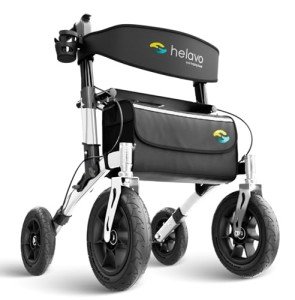8 Tips To Improve Your Indoor Walker Game
The Comprehensive Guide to Indoor Walkers: Benefits, Features, and Recommendations
Indoor walkers, typically designed for safety and ease of use, are invaluable aids for people with mobility concerns, seniors, or anybody recuperating from surgery or injury. These gadgets offer stability, support, and self-confidence, allowing users to preserve an active way of life within the convenience of their homes. This article explores the various elements of indoor walkers, including their advantages, essential features, aspects to consider when buying one, and a comparison of the top-rated designs readily available in the market today.
Advantages of Using an Indoor Walker
Indoor walkers use a multitude of advantages, from security to health enhancement. Here are some of the most considerable benefits:
Benefit
Description
Increased Stability
Provides support to prevent falls, making it safer to stroll.
Boosted Mobility
Encourages greater movement throughout the home.
Enhanced Confidence
Users feel more secure, reducing anxiety about moving.
Physical Rehabilitation
Aids in the healing procedure for post-surgery patients.
Much better Posture
Promotes correct body alignment while walking.
Social Interaction
Allows users to engage more with household and visitors.
Adjustable Features
Numerous designs deal with individualized requirements such as height modifications.
Secret Features of Indoor Walkers
When picking an indoor walker, it is necessary to assess its features to ensure it meets the user's particular needs. Here are some features to consider:
- Adjustable Height: Ensures that the walker fits the user's body size for ideal comfort.
- Foldability: Many walkers can be folded for easy storage and transport, making them convenient for those who might take a trip.
- Weight Capacity: Check the optimum weight the walker can support to ensure usability.
- Design Options: Options might consist of traditional walkers, rolling walkers with wheels, or specialized models for added performance.
- Hand Grips: Ergonomic grips help provide comfort and lower the danger of slipping.
- Brakes: A reliable braking system is vital for security when utilizing rolling walkers.
- Extra Accessories: Features like storage baskets or trays can be useful for bring individual items.
Elements to Consider When Purchasing an Indoor Walker
Selecting the right indoor walker can considerably affect the user's mobility and quality of life. Here are some elements to remember:
1. User's Condition
- Assess the mobility limitations or healing requirements of the user.
2. Type of Walker
- Identify whether a basic walker or a rolling walker is better suited based on the user's ability to lift the walker or the requirement for mobility as they walk.
3. Home Environment
- Consider the area in the home where the walker will be used. Is there enough space to maneuver through doorways and narrow corridors?
4. Individual Preference
- Looks and color can matter as users may feel more comfortable utilizing a walker that they find aesthetically appealing.
5. Upkeep
- Consider the maintenance and durability of the walker. Some materials need more upkeep than others.
6. Rate Point
- Indoor walkers can vary significantly in cost. Determine a budget plan that fulfills both quality and price.
Top Indoor Walkers: A Comparison
The marketplace features various indoor walkers designed to cater to different needs. Below is a relative table showcasing a few of the very best indoor walkers currently available.
Walker Model
Type
Weight Capacity
Adjustable Height
Foldable
Rate Range
Medline Heavy Duty Walker
Requirement Walkers
Approximately 400 lbs
Yes
Yes
₤ 50 – ₤ 70
Drive Medical Rollator
Rolling Walker
Approximately 300 lbs
Yes
Yes
₤ 70 – ₤ 100
Hugo Mobility Walker
Rolling Walker
As much as 250 lbs
Yes
Yes
₤ 60 – ₤ 90
Nova Medical Walker
Requirement Walkers
Approximately 300 pounds
Yes
Yes
₤ 85 – ₤ 120
Zler Folding Walker
Requirement Walkers
As much as 300 pounds
Yes
Yes
₤ 40 – ₤ 70
Regularly Asked Questions (FAQ)
1. Do indoor walkers have a weight limit?
Yes, a lot of indoor walkers have actually a specified weight capability. It is important to choose a walker that can support the user's weight for security.
2. Can a walker be used outdoors?
While indoor walkers can often be utilized outdoors, it's a good idea to use walkers specifically developed for outdoor use, which might provide better stability and balance on unequal surfaces.
3. How do I figure out the right height for my walker?
The appropriate height for a walker is typically waist-high when the user is standing. Users should be able to maintain a natural posture while holding the walker.
4. How do I tidy and keep my indoor walker?
Frequently clean down the walker with a wet cloth and mild cleaning agent. Check the brakes, wheels, and any moving parts to ensure they are working properly.
5. How can I improve my convenience while using a walker?
Think about utilizing grips with additional padding or using supportive footwear. Top Performance Rollator to change the height of the walker to avoid strain on the back and arms.
Indoor walkers serve as important tools for improving mobility, security, and independence for individuals with mobility obstacles. With numerous designs to pick from, it is essential to consider elements such as the user's specific requirements, the home environment, and the walker's features. By picking the ideal indoor walker, users can improve their quality of life, keep their self-reliance, and continue participating in everyday activities with self-confidence.
